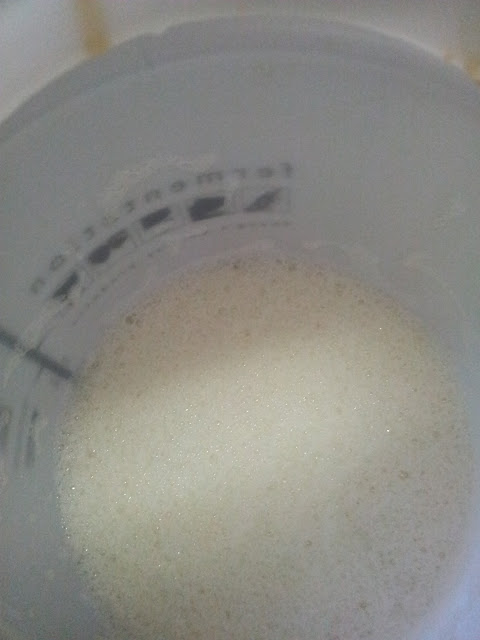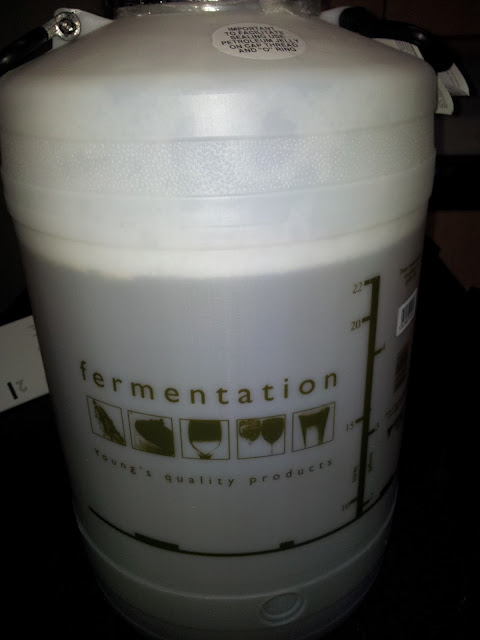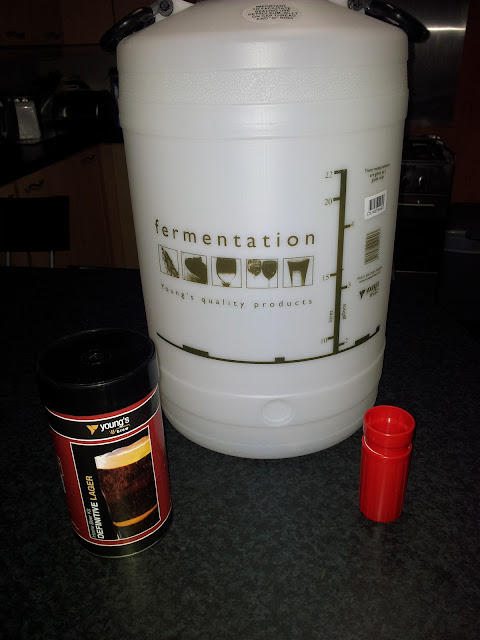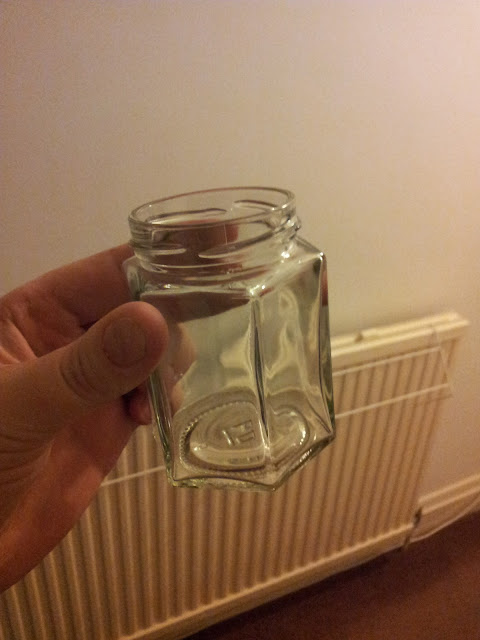I have been busy over the last few days bottling and racking some of my home brew. The brews I have done in the last few days have been ones where I was unable to get a initial gravity reading so I won't know how strong they are but that's half the fun.
To start with I bottled my dandelion wine (
original post can be found here) as this was a smaller batch and one of the older ones. I have had a sneaky taste of it and so far it tastes quite nice, actually a lot nicer than I was expecting although this could be the flavour of the red grape juice I used. Either way if the taste gets better from what it is at the moment then I'm on to a winner and will make a much larger batch next year. I got 3 full bottles and a part bottle, the part bottle is in the fridge ready to drink and the others I have stored in the loft to age; by ageing the wine I hope to further improve the flavour.
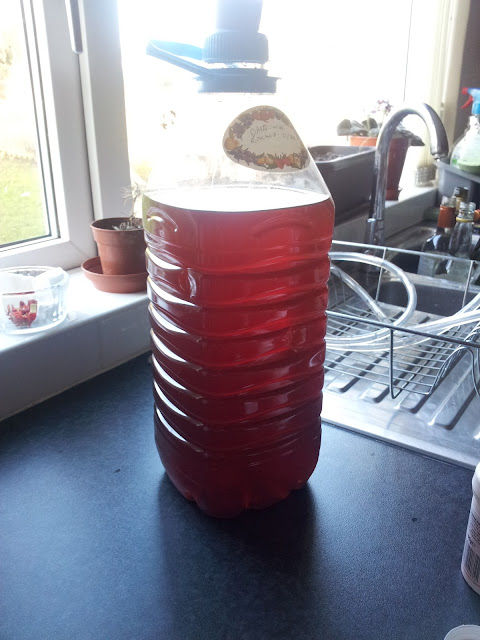 |
| Dandelion wine in home made Demijohn, dilute pop bottle! |
 |
| Bottles I've been collecting. Soaking to try to loosen the labels. The next step was to sterilize them. |
 |
| The finished product bottled and now away in storage in my loft. |
The next thing I bottled was the remainder of the second batch of mead I made at the start of the year (
again link for that post here). This was a really large batch and I already have 3 gallons of it stored in my earthenware demijohns (
link to that post here; in that post it says I have 4 demijohns but actually I had 5) that my granddad gave me at the beginning of the year. That left me with 2 demijohns with the mead in; one of these I have left alone and the other I added more honey to a while ago although I can't find the post that says how much honey was added, oh well! I got 6 bottles from each demijohn and have stored them along with the dandelion wine. I had a small taste of the mead as it was being bottled and it has got some taste, more than it has in previous tests, it may turn out nice after all when it's aged a while.
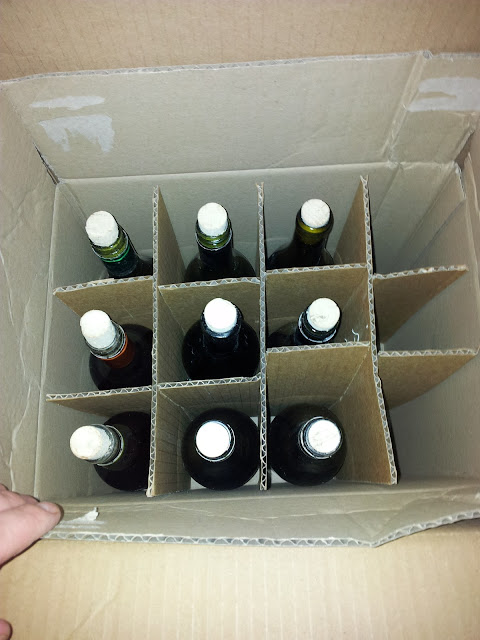 |
| Bottled up and ready for storage. |
 |
The sweetened mead ready for storage.
|
Once I'd bottled all the mead I had a few empty demijohns so while I had the equipment out I also racked one batch of
raspberry wine. This batch has been going since July so is also nearly ready to bottle up but I now have a shortage of wine bottles so will be asking my dad to start saving them again for me. The raspberry wine had developed a thin layer of sediment on the bottom, which is to be expected as this was the second time I racked it, the first time it had a very thick layer of sediment. Next time there will, hopefully, be little to no sediment for when I bottle it.
And finally with the remaining demijohns I had I've made 2 further batches of J.A.O. mead as this is my favorite and easiest to do. I followed the method on
this page but as with the last batch of this I made I have upped the amount of honey to 1.8kg so now have 3 demijohns full of this at various stages of development! I hope the extra honey doesn't spoil it but I doubt it will, they are all smelling rather nice and the oldest of the 3 is clearing nicely.
 |
| Solidified honey. |
 |
| Not even 1kg yet. |
 |
| 1.8kg dissolving in boiled water that has been left to cool for about 30 minutes |
 |
| This much honey takes a long time to dissolve even with vigorous stirring |



